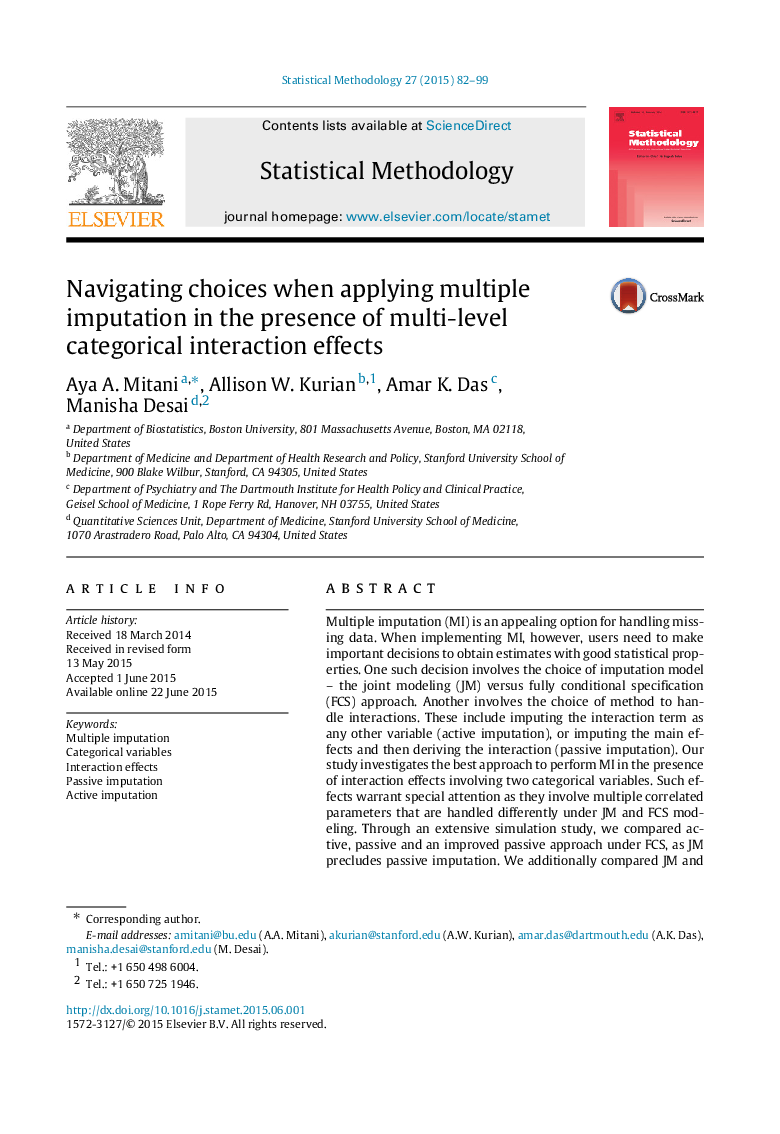| Article ID | Journal | Published Year | Pages | File Type |
|---|---|---|---|---|
| 1150862 | Statistical Methodology | 2015 | 18 Pages |
Multiple imputation (MI) is an appealing option for handling missing data. When implementing MI, however, users need to make important decisions to obtain estimates with good statistical properties. One such decision involves the choice of imputation model–the joint modeling (JM) versus fully conditional specification (FCS) approach. Another involves the choice of method to handle interactions. These include imputing the interaction term as any other variable (active imputation), or imputing the main effects and then deriving the interaction (passive imputation). Our study investigates the best approach to perform MI in the presence of interaction effects involving two categorical variables. Such effects warrant special attention as they involve multiple correlated parameters that are handled differently under JM and FCS modeling. Through an extensive simulation study, we compared active, passive and an improved passive approach under FCS, as JM precludes passive imputation. We additionally compared JM and FCS techniques using active imputation. Performance between active and passive imputation was comparable. The improved passive approach proved superior to the other two particularly when the number of parameters corresponding to the interaction was large. JM without rounding and FCS using active imputation were also mostly comparable, with JM outperforming FCS when the number of parameters was large. In a direct comparison of JM active and FCS improved passive, the latter was the clear winner. We recommend improved passive imputation under FCS along with sensitivity analyses to handle multi-level interaction terms.
